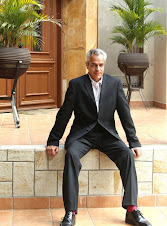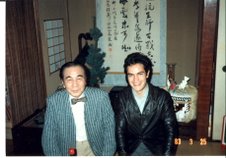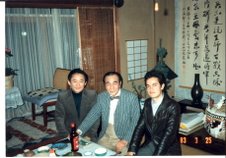Première of String Quartet No. 1, 'Montes', in Philadelphia
 Miranda Cuckson (violin), Stephanie Griffin (viola), me (composer), Joanne Lin (cello), Annaliesa Place (violin). In the first image, said with Mrs Marcela Montes, widow of the painter Fernando Montes.
Miranda Cuckson (violin), Stephanie Griffin (viola), me (composer), Joanne Lin (cello), Annaliesa Place (violin). In the first image, said with Mrs Marcela Montes, widow of the painter Fernando Montes.
It happened last 28 November in Rock Hall Auditorium at Temple University. The performers were the Momenta Quartet, a group for whom I have to check myself if I am not to run out of superlatives. I apologise in advance if I fail.
When I first met them, two days before the concert, they had the new piece learned. Our work together had to do with character, articulation, balance, in a word: interpretation. No complaints about how difficult the music was, no excuses about an unlearned passage, no petty quibbling! Only intelligent requests of clarification, sometimes exposing an inconsistence on my part or leading me to rethink a notational choice.
It was immediately apparent that the Momenta were more than used to working with composers, as the dynamic in rehearsal was one of ease and flowing communication when required. As impressive as this was the respect they showed each other, with no player imposing her view on any other, but instead careful consideration being given to their diverse, strong individualities.
Anyone inferring the result of the above to be a harmonious but bland compromise would be mistaken, for there is plenty of edge in what the Momenta do. Their explosions of energy and passion are as fearful as the ice of their tightest, most controlled pianissimos. Yes, I am no longer referring only to their rendition of my own piece, but also remembering what they did, for example, with Janácek’s Quartet No. 1, 'Kreutzer Sonata'. The passion overflowed without sentimentality, the tragedy raged without melodrama. It was all just so well gauged. And the technique was accomplished throughout; with them we are in a sphere where technique ceased to be a concern at some forgotten point in the past of their young lives.
As for me, I had one of the most enjoyable experiences ever. I was able to sit back, secure in the knowledge that my music was in safe hands, that I did not have to worry about whether this or that passage would come out as written. It came out as written, but better, because it was enriched by the total commitment of these incomparable four musicians. The words 'thank you' sound too hollow to convey my gratitude and admiration for what they do.
The only disappointment of the evening was the small size of the audience, well below what these superb performers deserved. As the talented composition student Ryan Olivier explained to me, this was a hectic time of the year when the students have to split their time among a vast array of concerts and their own assessed recitals at Temple University. Fair enough, but what a loss for the rest of Philadelphia not to have been there! Setting aside the two new works, you do not often hear Janácek and Schumann played with that excellence. The silver lining for me was the presence of Marcela Montes, widow of Fernando, the great Bolivian painter who inspired my quartet and to whom it is dedicated. With Marcela was a small but important group of Bolivians, two of whom I had known in the 1970s in La Paz: Mrs Ximena Iturralde de Sánchez de Lozada and her son Ignacio.
The composition staff was represented by two lecturers who were generous in their enthusiasm, Prof Maurice Wright and one other whose pardon I beg, in the unlikely event he reads these pages, for forgetting his name. Nor can I link him to any of the composition lecturers listed among the composition staff on the Temple website. Their kindly-expressed empathy to the spirit to the quartet was to me an indication of an attunement of mind that makes me want to hear their music.
Young Ryan Olivier himself had a piece premièred, String Quartet. It was impressive in the assurance with which it adhered to an energetic gesturality that is so often lacking in new music. You can hear it on his myspace page. He is a most personable individual too. I think he will go far.
I thank the Boyer College of Music and Dance at Temple University for putting on this event and for their hospitality to me.







